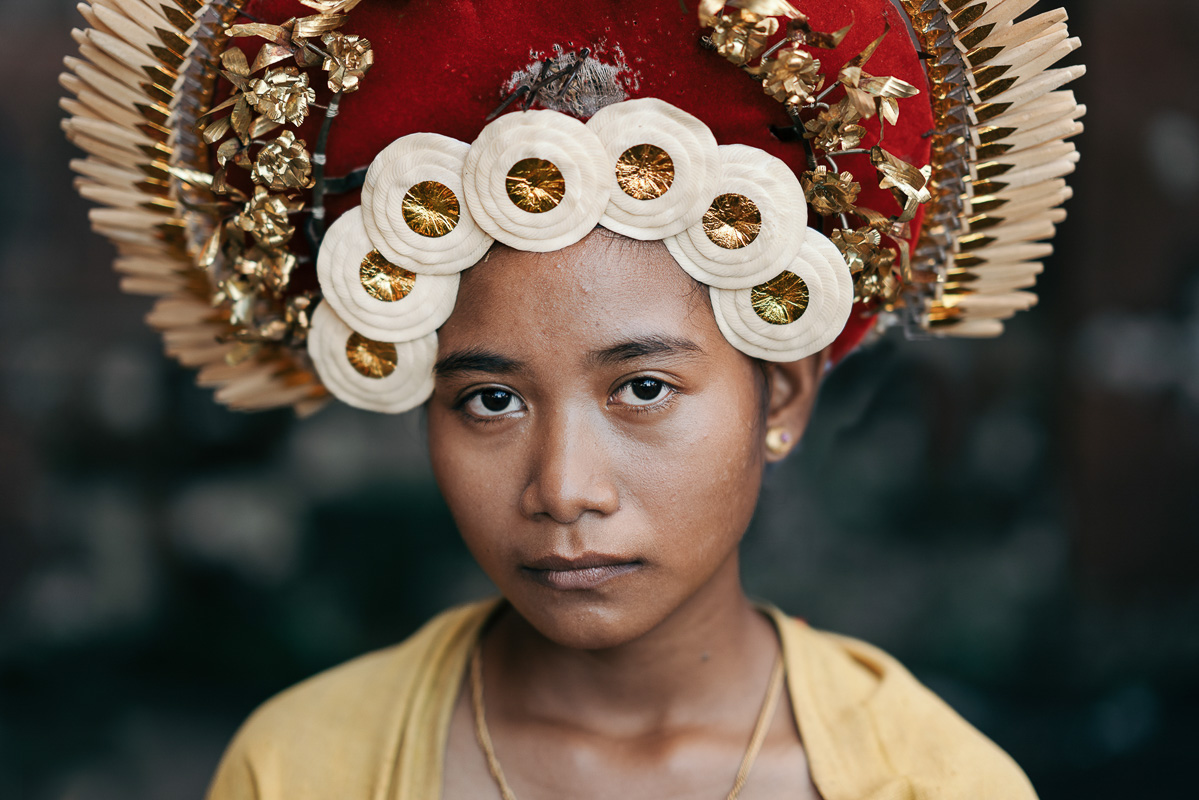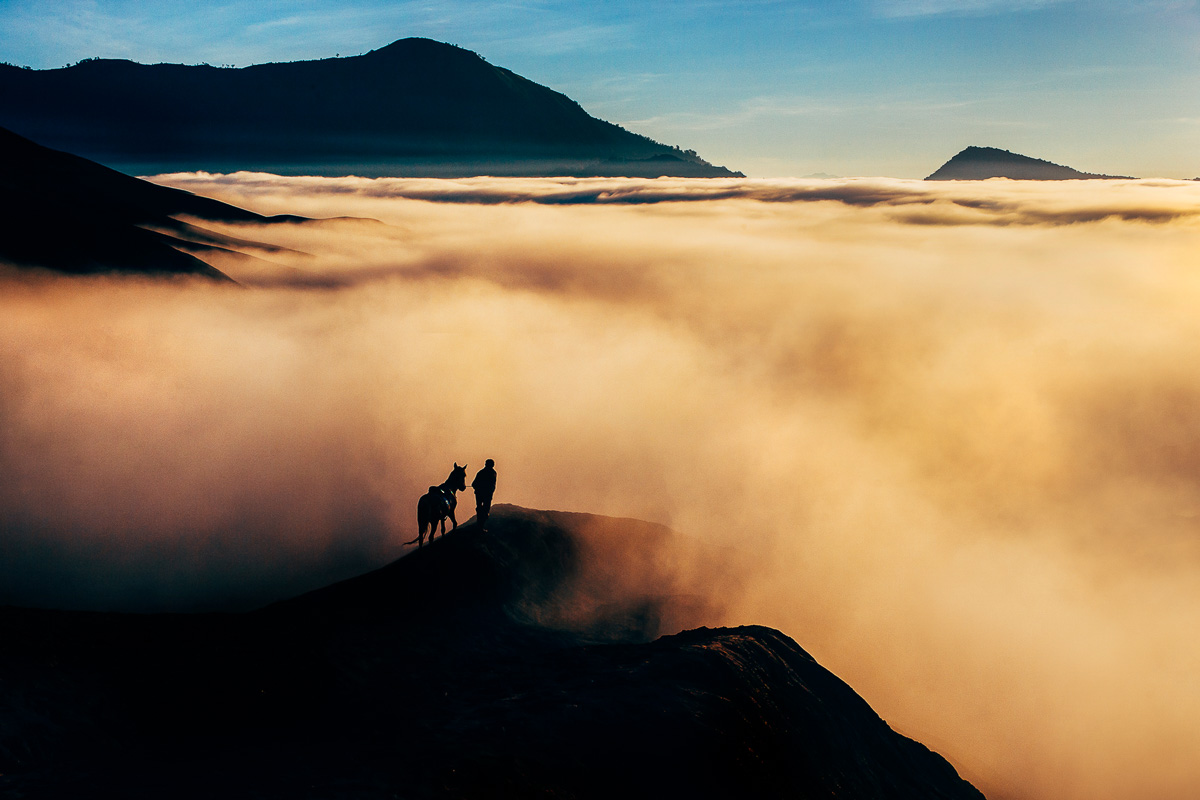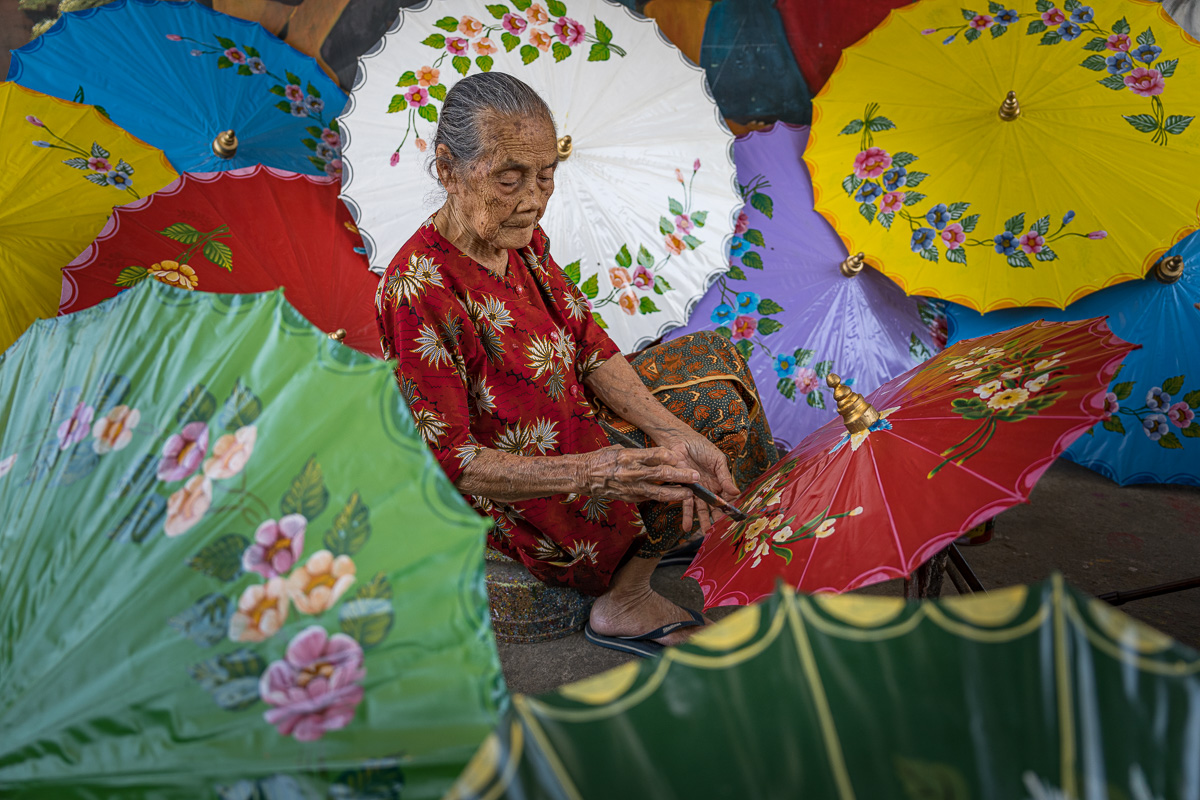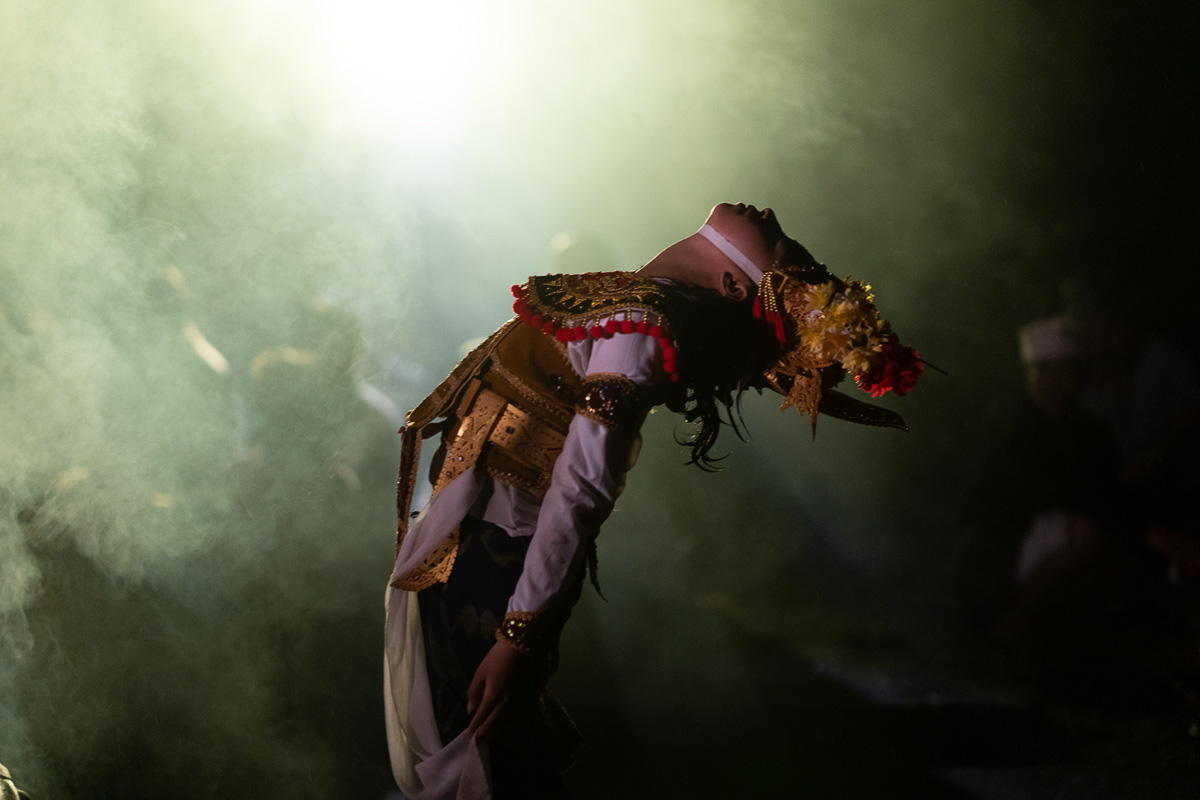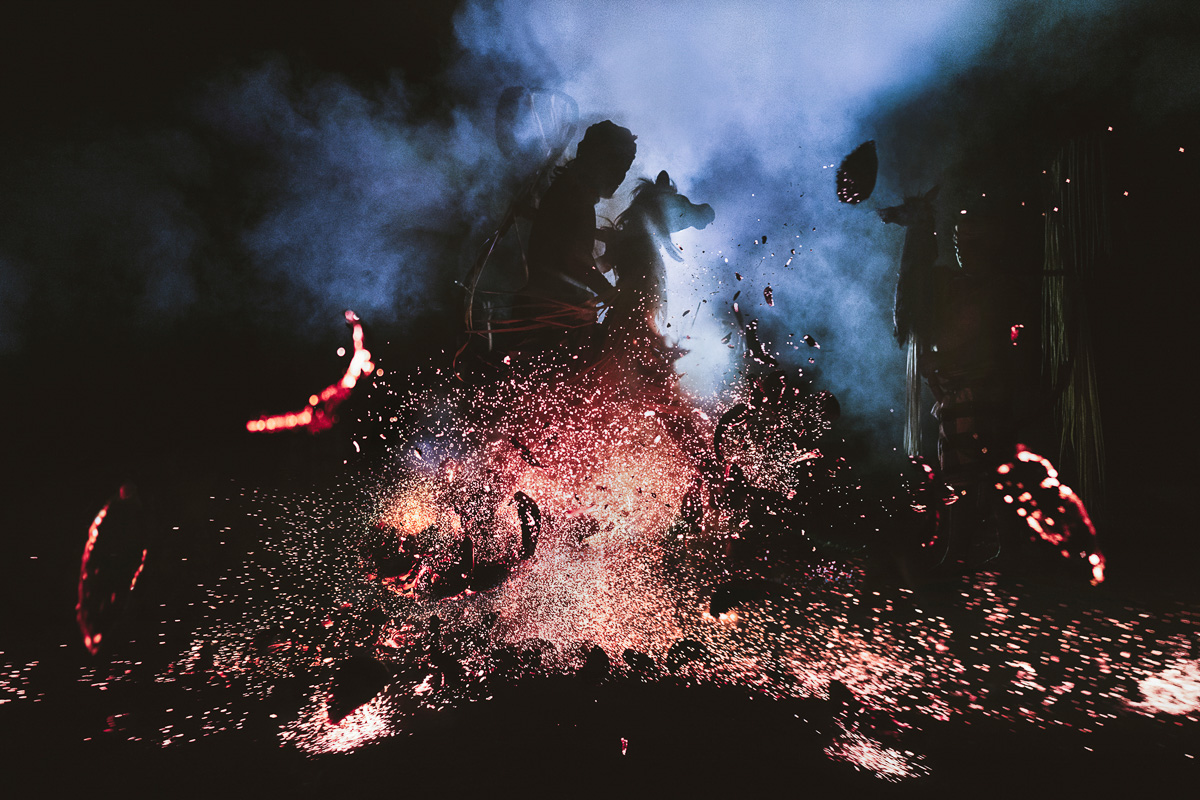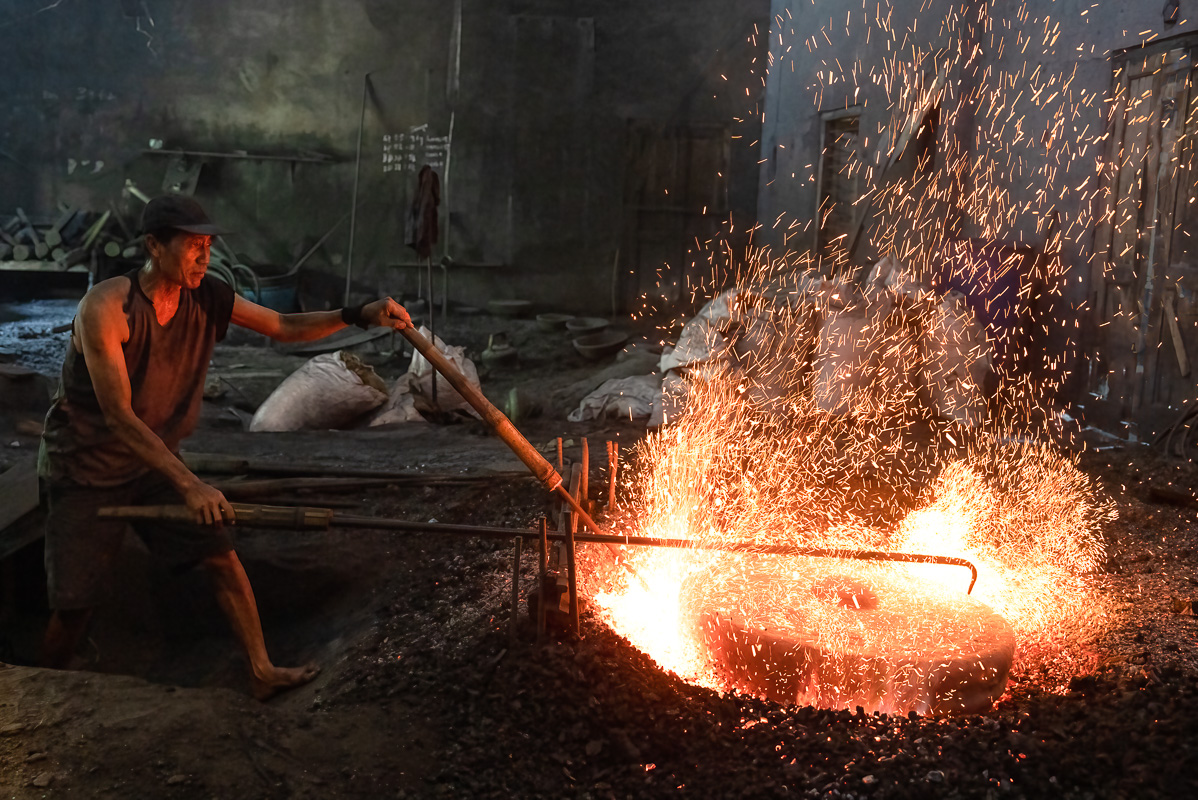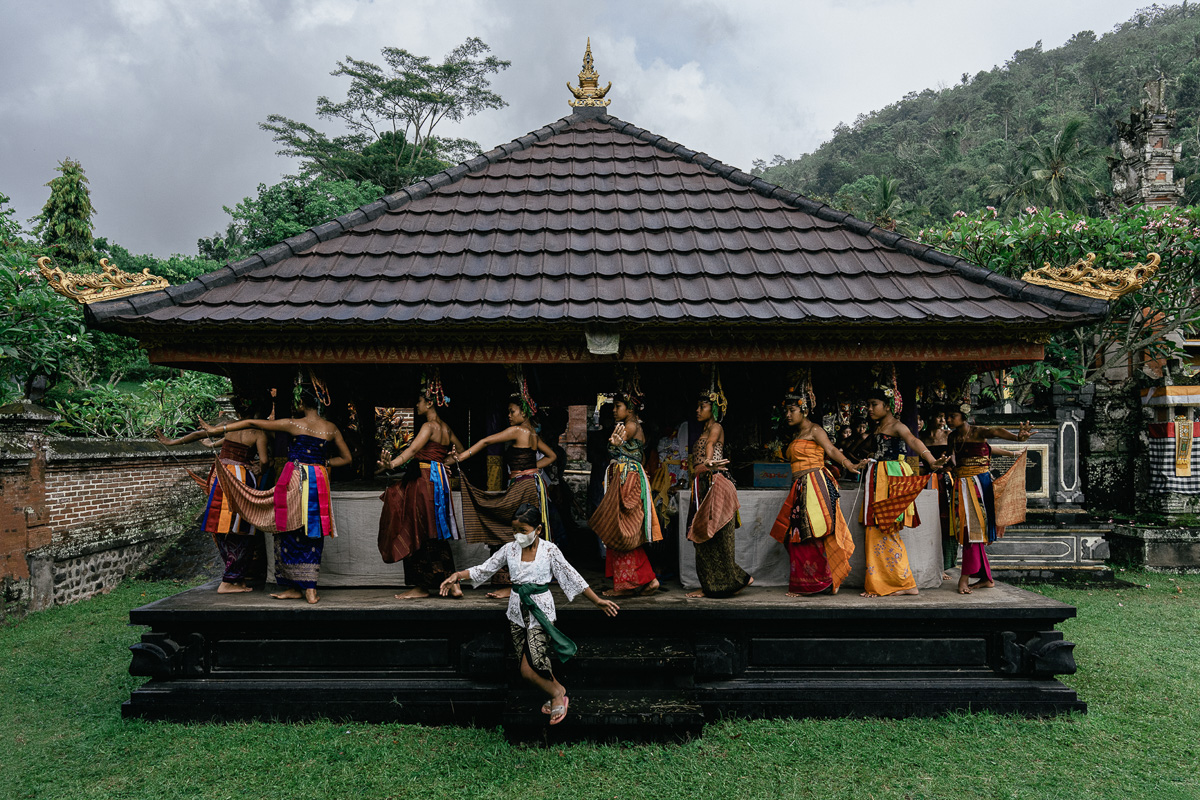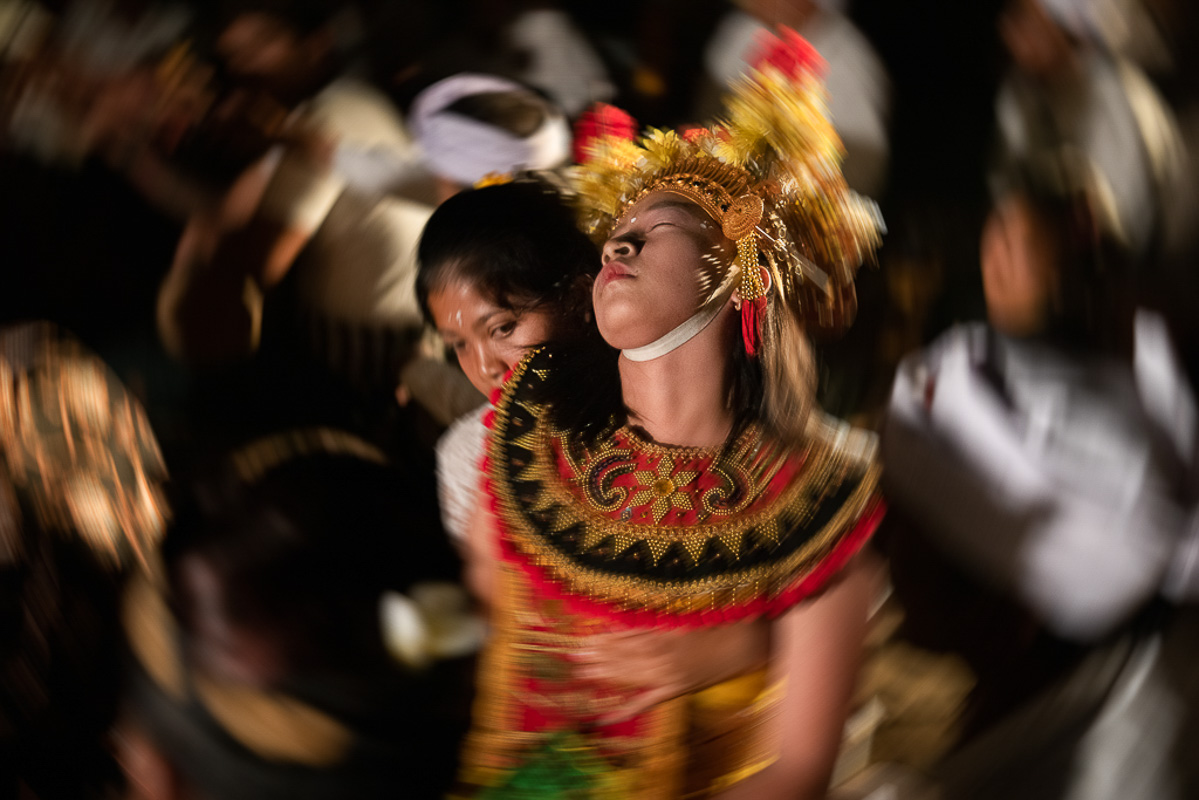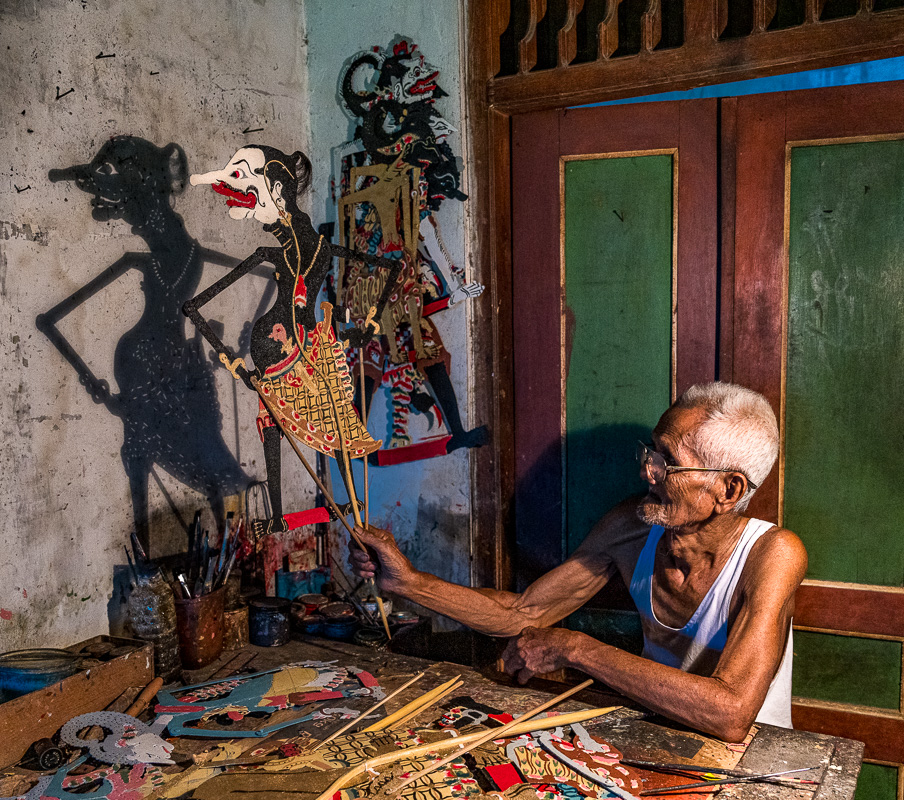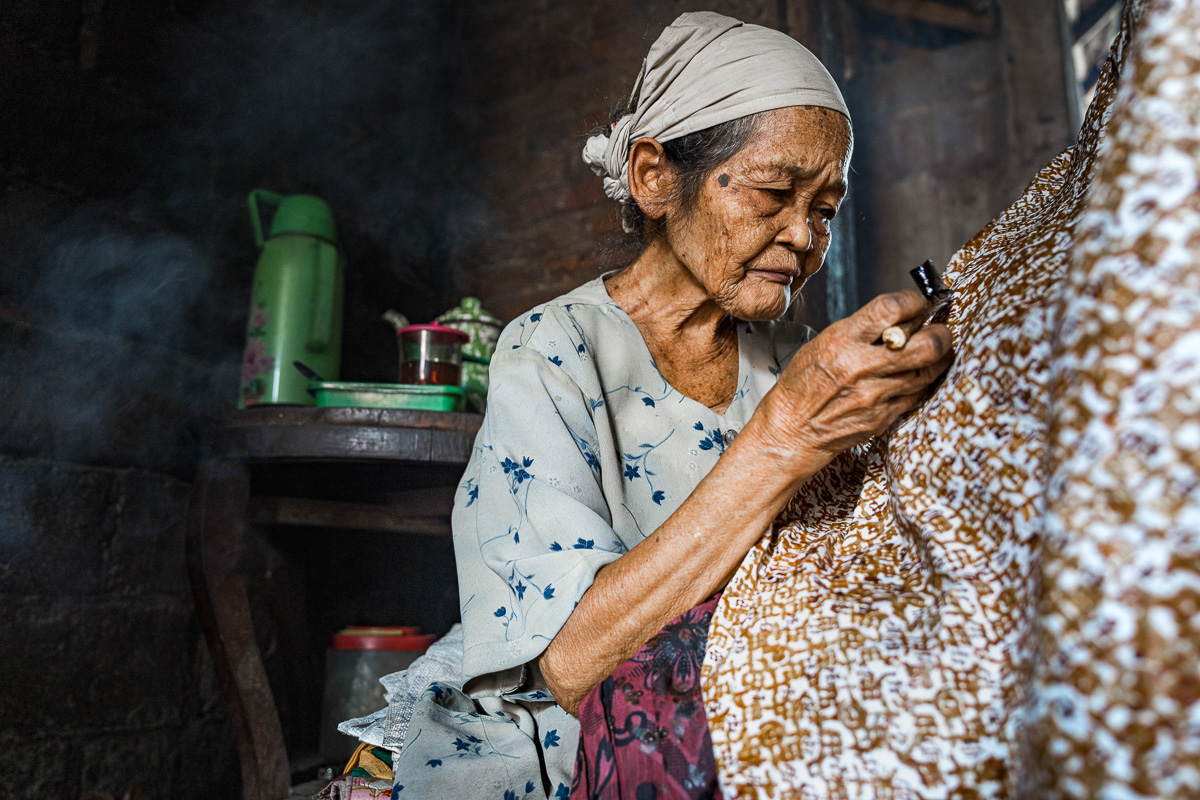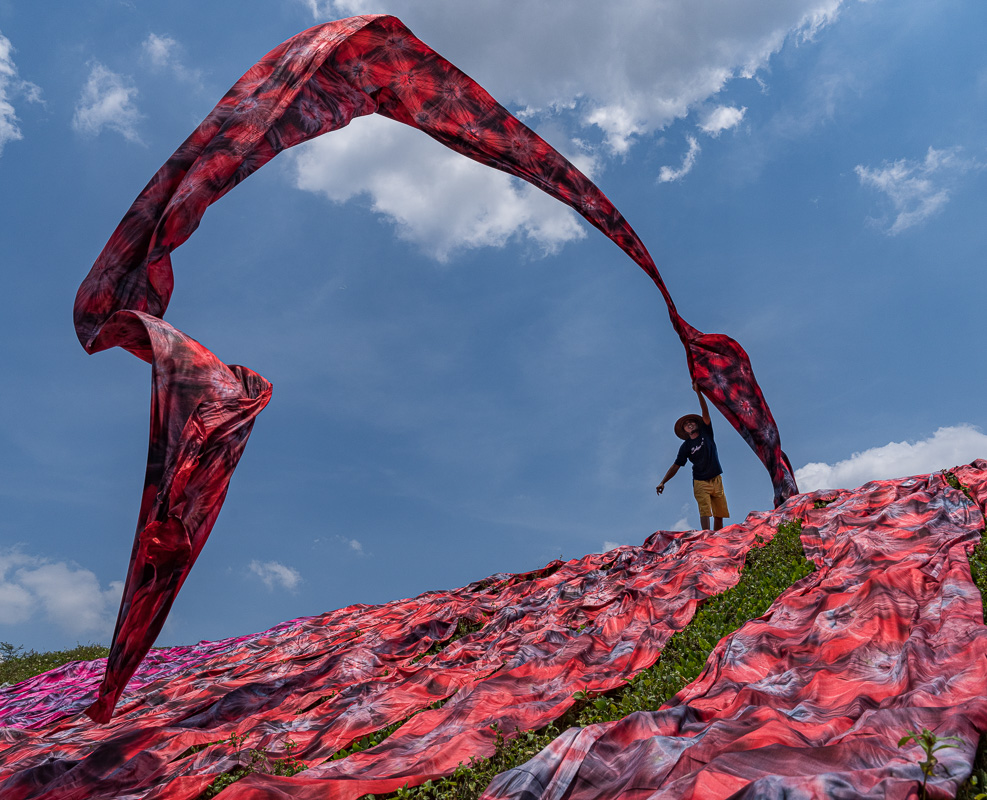Overview
Bali and Eastern Java offer a wealth of opportunities for photographers to capture the stunning beauty and rich culture of Indonesia. This photo tour will take you on a journey through some of the most breathtaking landscapes and cultural treasures in the region.
On this 12-day tour, you’ll have the guidance and support of Patrick who has explored Indonesia many times, and a local acclaimed photographer and his team who will help you connect with the people, capture the best images, and provide tips and techniques for improving your photography and storytelling skills. Whether you’re a seasoned pro or a beginner, this photo tour is the perfect way to discover the beauty and culture of Bali and Eastern Java through dialog with locals and the lens of your camera and experience its richness firsthand.
The itinerary focuses on two major highlights: the mesmerizing Rejang ceremonies with their costumes and dances in various villages across the island, and Eastern Java, where you’ll be able to explore vibrant Jogjakarta and the breathtaking Bromo National Park. Marvel at majestic volcanic formations and capture stunning landscapes, including horsemen photography sessions amidst the caldera. You will have the chance to meet and interact with the local people while learning about their traditions and way of life. Thanks to our research and local connections, you’ll have many unique photographic and cultural opportunities. NOTE: This itinerary caters to landscape and portrait photography enthusiasts, those seeking dramatic scenery, and individuals with beginner to advanced fitness and photography levels.
Itinerary
Day 1:
Arrival in Denpasar, Bali’s international airport. Pickup and transport to our resort for orientation and dinner. You will meet our local cultural expert and cultural guide, Yan Gunayasa and renowned documentary experts Sandy Wijaya and Helmi Satriadi, who will accompany us during this journey. Overnight in Ubud.
Day 2:
This morning we explore Tenganan Village, the oldest Balinese Traditional Village in Karangasem Regency, East Bali. We’ll have the opportunity to meet the skilled weaving lady, Daha. Tenganan Village holds immense cultural significance, known for its renowned Tenganan Pegringsingan literature. This unique village showcases the distinctive community life pattern of Bali Aga Village culture, dating back to the Hindu Prehistoric era, setting it apart from other regions in Bali. With our exclusive connections, we’ll have privileged access to interact with talented artisans, artists, and performers. Enhance your photography skills by mastering the art of portraiture, including techniques such as capturing mesmerizing rim light and mastering the play of natural and bouncing light.
After lunch, we will return to the village for more exploration, spontaneous images, and village scenes, where on your own or in small groups you’ll practice portraits, landscape, lifestyle, and culture photography.
After an early dinner, we drove north to a remote village private to attend a Puppet Sacred Dance, a trance ceremony. Unique to this village and only witnessed by Nat Geo in 1931 and 1959, undiscovered since. The ceremony is often used to save villagers from diseases. The ceremony happens in the dark, we will bring lights to allow compositions with shadows, backlights, and whatever your creativity will bring. Overnight in Ubud.
Day 3:
After breakfast, check out and drive to eastern Bali. Wayang Wong is a Balinese dance-drama blending storytelling, music, and intricate choreography. It originated in Bali, Indonesia. Performers wear masks, and ornate costumes, and gracefully enact Hindu mythological tales like Ramayana and Mahabharata. The stylized movements showcase agility and expressiveness. Accompanied by gamelan music, Wayang Wong immerses audiences in Bali’s cultural heritage, preserving ancient narratives and spiritual teachings with visual beauty and theatrical performances.
After lunch, we will attend another amazing event: the Dewa Masraman Ritual, also called the “fight of the deities” or “the battle of palanquins”. It is a sacred event that reveres the gods through offerings and a series of activities dedicated to them throughout the day. In the morning, participants partake in traditional food, showcase effigies of deities placed in palanquins, and make offerings. As the afternoon arrives, a captivating battle ensues. Dozens of men, entranced, carry the palanquins and rush around the temple, colliding with each other in a mesmerizing display of devotion and energy. Overnight in Karangasem.
Day 4:
n the morning, we have exclusive access to a local family and witness the Rejang preparation of a dancer. Portraiture and environmental portrait shooting in the villagers’ house. Rejang dance was created in the 8th-14th century AD This dance is usually performed in temples, or in sanggah (sanctuary) during the ceremony, as a sense of dedication to the ancestors. This dance is performed by women during the ceremony of worship with the position of marching, circling, and also holding hands.
After lunch, we will witness Rejang dances in other locations. It is said that the Rejang dancers in Karangasem Village are symbolic of the nymph in the myth of Dewata Nawasanga, a story of a great fight between Gods and giants over holy water of immortality. The stunningly beautiful nymphs definitely took the side of the Gods, giving great support in charming the giants so the Gods finally win the holy water. Overnight in Karangasem.
Day 5:
We visit a remote village in the morning, where new opportunities await for immersive portraiture, stunning landscape photography, and intriguing cultural encounters. Witness the intricate preparations of a traditional dancer, capturing the essence of their artistry. Explore the intimate world of the villagers as we respectfully are invited into their homes, capturing authentic and environmental portraits that reflect their unique stories. Immerse yourself in the mesmerizing morning scenery that surrounds these villages, allowing nature’s beauty to enhance your photographic creations. In the afternoon, we will continue delving into Rejang villages, witness Rejang dances. Rejang itself means “offering”, which is basically offering themselves to the gods. There were even some cases that the dancers lose themselves in the ceremony. Where they have a transcendental experience and reach a higher state of consciousness. The dancers are said to be the heavenly maidens. They come to Earth to welcome the gods to bestow protection and prosperity on Earth. This dance is usually taught from generation to generation to continue the tradition. Overnight in Karangasem.
Day 6:
This morning we checkout and transfer to the airport, flying to Jogjakarta, Central Java, on a short flight (under 2 hours). After check-in and lunch, we will stroll the historical city of Yogyakarta, a traditional Javanese city founded in 1356 by the first Sultan Hamengkubuwana as the center of the Sultanate of Ngayogyakarta Hadiningrat (henceforth: Kasultanan Yogyakarta). We will have a casual photo walk, discreet, and unobtrusive. Be a witness to the traditional mix of the modern bustling city and the old city of Yogyakarta. Overnight in Jogjakarta.
Day 7:
This morning, we visit Ledak village. One of the uniqueness of Yogyakarta is that there are so many cultural traditions and products based on each village. For example, Ledak Village is one of the villages that is well-known for its arts. You can mingle with locals, have tea with old batik makers, and witness the Royal Palace Dancers practicing. Many opportunities to picture daily life, Royal dancers, and batik makers.
After lunch, be prepared to witness rarely seen Sacred traditional ketoprak performances of historical and legendary epic, which celebrates the Javanese and Hindu cultural heritage, played by authentic Kejawen actors and actresses while their improvised interactions and dialogue resonate with their daily life social experiences. Overnight in Jogjakarta.
Day 8:
This morning we check out and drive to Solo (3.5h drive), a nearby town, check in and lunch, then drive to a nearby village to discover the exquisite artistry of Central Java. Our first stop will take us to the area of umbrella makers, where we’ll witness the continuation of a time-honored craft. For centuries, Central Java has been renowned for its ancient ornamental umbrellas, a tradition that traces back to the 12th century. We’ll have the privilege of visiting the last few remaining umbrella artisans in this village, observing their meticulous techniques and understanding the deep cultural significance behind their creations. We’ll also have the opportunity to delve into the captivating world of batik makers. Central Java’s rich heritage in batik production has left an indelible mark on the artistic landscape. We’ll engage with the passionate artisans, witnessing firsthand the intricate process of hand-dyeing fabrics, and discovering the intricate patterns and symbolic meanings woven into each piece. Overnight in Solo.
Day 9:
Early departure for the Bromo National Park, and checking into a resort just outside the caldera of the volcano. Bromo National Park is a natural wonder that captivates visitors with its stunning landscapes. At its heart lies the magnificent Mount Bromo, an active volcano surrounded by a vast, otherworldly caldera. The park offers breathtaking views of smoldering volcanoes, vast stretches of sand, and picturesque sunrises that paint the sky in vivid hues. We have done our best through local connections to get access to unspoiled locations.
After lunch, environmental portraits and portraiture of distinctive faces of the Tengger People. We have respectful access to original villages, maybe get in their homes, and take portraits in low light. Overnight near Bromo.
Day 10:
Leave early morning by 3.00 AM to the crater. Witness the mists shrouding the crater and the surrounding area. We will photograph a local Shaman posing in this magical sunrise setting. Later on, we will drive jeeps down to the caldera to direct and photograph Tengger horsemen running, and showcasing their skills.
After lunch, we will continue the exploration of Tenggerese villages for cultural discovery and portraits. The Tengger people are descendants of loyalists of the Majapahit Empire who resisted Islamization for centuries and were driven further into the mountains after the mass arrival in the area of Moslem Madurese in the 19th century. The Tengger initially numbered 600,000 but over the past decades, many have been assimilated into the dominant immigrant Moslem population. Spend the night near Bromo.
Day 11:
Early morning for this last photoshoot in Bromo National Park, with an arranged display of 20 horsemen running in the morning mist and sea of sand of the caldera, creating surreal images or videos. We will have the opportunity to capture these scenes, experimenting with different styles of photography, to get unforgettable moments.
After lunch, we check out and drive to the airport Surabaya (2h drive) and fly back to Bali. Overnight in Sanur.
Day 12:
Today the trip officially finishes. Participants will be transported to the airport for their flights home.

